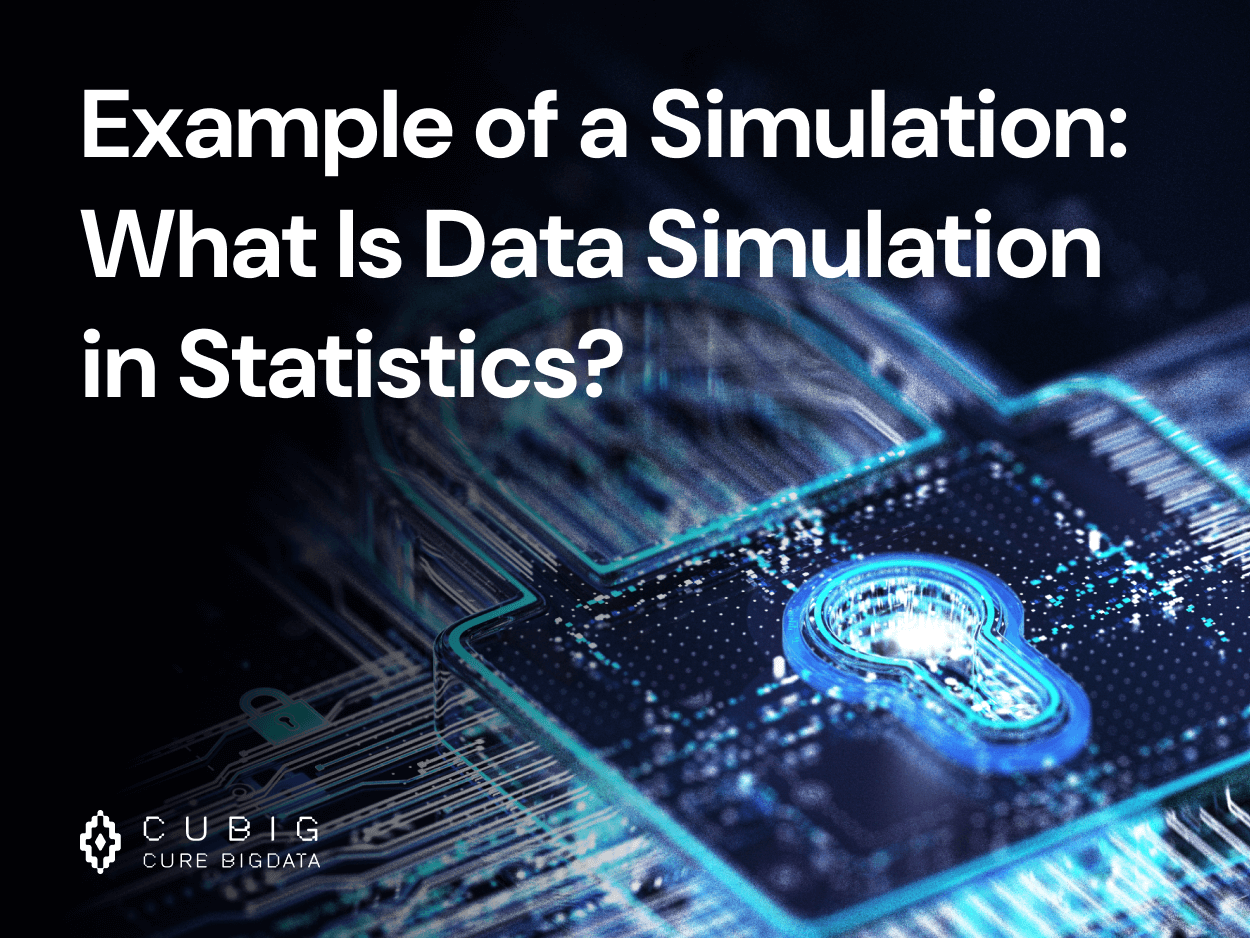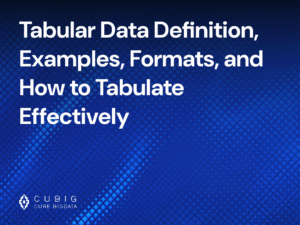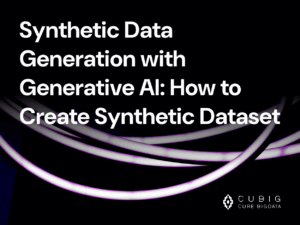Example of a Simulation: What Is Data Simulation in Statistics?
Table of Contents
What Is a Simulation? Understanding Its Role in Data and Statistics
Definition and Purpose of Simulation
A simulation is a technique used to replicate real-world systems, processes, or phenomena using computational models. These models are built based on mathematical formulas, logical rules, or data-driven patterns, allowing researchers and analysts to observe how a system behaves under different conditions. The primary purpose of simulation is to experiment with complex systems in a controlled, virtual environment, where real-world testing might be impractical, costly, or impossible. From weather forecasting to manufacturing processes, simulations support critical decision-making by providing a deeper understanding of how various inputs influence outcomes.
Why Simulations Matter in Modern Data Analysis
Simulations have become an essential tool in modern data analysis due to their versatility and scalability. They provide a sandbox environment for testing hypotheses without the need for real-time data collection or physical trials. For example, simulations can help analysts forecast customer behavior, evaluate business risks, or test the impact of policy changes. This makes simulations particularly valuable in situations where data is incomplete, sensitive, or highly variable. Moreover, they enable repeatable and consistent testing, ensuring that analytical models are stress-tested under a wide range of scenarios before deployment in real-world settings.
What Is Data Simulation? Key Concepts and Techniques
Generating Synthetic Data for Predictive Insights
Data simulation involves generating synthetic datasets that closely resemble real-world data in structure and behavior. These synthetic datasets are used to augment training data for machine learning models, support scenario testing, and ensure data availability in cases where real data cannot be accessed due to privacy, regulatory, or logistical issues. By customizing variables, distributions, and noise levels, analysts can simulate numerous “what-if” scenarios, improving model generalizability and robustness. This approach also addresses issues like data imbalance or rare event prediction, enabling more resilient and ethical AI model development.
Monte Carlo Simulation: A Widely Used Method
Monte Carlo simulation is one of the most popular methods in data analysis, particularly in finance, engineering, and science. It involves running thousands or even millions of random trials to understand the probability distribution of outcomes. For instance, in financial modeling, Monte Carlo simulations are used to estimate portfolio risk or project future asset values by modeling the uncertainty of market returns. The strength of this method lies in its ability to handle complex, nonlinear systems with many uncertain variables, making it ideal for high-stakes decision-making under uncertainty.
Agent-Based and Discrete Event Simulations
Agent-based simulations (ABS) focus on modeling the behavior and interactions of autonomous agents—individuals, machines, or organizations—within a defined environment. Each agent follows a set of rules and may adapt based on interactions, which makes ABS ideal for studying complex adaptive systems such as economies, ecosystems, and social dynamics. Discrete event simulations (DES), on the other hand, model systems as a sequence of events in time, such as arrivals, departures, or changes in state. These are widely used in logistics, manufacturing, and healthcare operations, where timing and resource constraints are critical. Together, ABS and DES offer granular, dynamic insights into system behavior over time, helping stakeholders optimize processes and policies more effectively.
Example of a Simulation: Real-World Applications
Simulating Stock Market Scenarios for Risk Assessment
Financial institutions frequently utilize simulations to assess risk and uncertainty in investment strategies. By applying Monte Carlo simulations, analysts generate thousands of possible market scenarios based on historical data and probabilistic models. These simulations account for variables such as interest rates, inflation, volatility, and asset correlations, helping institutions understand potential losses under extreme market conditions. This approach is not only valuable for portfolio optimization but also for regulatory compliance, such as stress testing required by financial authorities. Moreover, simulation models are used to back-test trading algorithms, ensuring that automated strategies can perform reliably under various market dynamics.
Healthcare Simulations for Clinical Decision Making
In the healthcare sector, simulation plays a critical role in supporting clinical and operational decisions. Simulated environments allow medical professionals to evaluate diagnostic tools, optimize treatment protocols, and predict patient outcomes without putting actual patients at risk. For example, disease progression models simulate how illnesses evolve under different treatment regimens, aiding in personalized medicine. Additionally, hospitals use discrete event simulation to optimize resource allocation, such as emergency room staffing or ICU bed availability. Medical training programs also rely on simulation-based learning—using virtual patients or physical mannequins—to improve practitioner skills and reduce human error in real clinical settings.
Urban Planning Through Traffic Flow Simulations
Traffic flow simulations are instrumental in modern urban planning and smart city development. These simulations use real-time and historical traffic data to model how vehicles move through city infrastructure under various conditions, such as rush hour, road closures, or construction projects. Engineers and urban planners use agent-based or discrete event simulation models to test different traffic signal timing strategies, evaluate public transportation routes, and predict the impact of new infrastructure developments. The result is more efficient traffic management, reduced environmental impact from congestion, and improved commuter experiences. Furthermore, simulations support policy-making for autonomous vehicle integration and pedestrian safety enhancements.
Supply Chain Optimization with Demand Forecasting Models
Simulations in supply chain management are vital for forecasting demand, evaluating supplier reliability, and managing inventory. Through the use of synthetic data and probabilistic models, businesses can simulate seasonal demand shifts, disruptions in supply chains, or changes in consumer behavior. These models help logistics managers test different inventory policies, warehouse configurations, and transportation routes under fluctuating conditions. For example, a company might use simulation to determine the optimal reorder point to minimize stockouts during a high-demand period. Additionally, simulations enable real-time scenario analysis, allowing organizations to quickly adapt their operations in response to global events, such as natural disasters or geopolitical instability.
Simulation Data vs Real-World Data: A Comparison
Advantages of Simulation Data
Simulation data provides a powerful alternative to real-world data, particularly in environments where data collection is constrained by cost, ethics, or availability. One of its most significant advantages is privacy preservation. Since simulated datasets are artificially generated, they do not contain personally identifiable information (PII), making them compliant with regulations like GDPR or HIPAA. Additionally, simulation data can be scaled infinitely, allowing organizations to generate large volumes of consistent, labeled data for training machine learning models. This is particularly useful in early-stage model development, rare event prediction, or when real-world data is heavily imbalanced. Simulation also enables testing under extreme or hypothetical conditions, which are difficult to capture naturally but critical for robust system design.
Limitations and Considerations
Despite its flexibility, simulation data is not without limitations. Because simulations are based on predefined rules or models, they may fail to capture the full complexity, randomness, or noise of real-world systems. For instance, subtle patterns in human behavior or edge cases in sensor data might be overlooked if not explicitly modeled. Furthermore, simulations risk embedding biases or inaccuracies if they rely on flawed assumptions or incomplete source data. Validation is key: simulated outputs must be rigorously compared against real-world benchmarks to ensure that the synthetic data is a reliable proxy. In mission-critical applications like financial risk assessment or public safety, overreliance on unverified simulations can lead to erroneous conclusions or operational risks.
Combining Real and Simulated Data for Accuracy
To mitigate the shortcomings of each data type, many organizations adopt a hybrid approach, combining simulation data with real-world data. This method leverages the scale and flexibility of simulated data while grounding models in actual observations. For example, in autonomous vehicle development, real driving data is used to capture environmental complexity, while simulation data augments rare scenarios like sudden pedestrian crossings or sensor failures. In healthcare AI, patient data may be scarce or protected, so simulations are used to generate plausible clinical variations, then validated against anonymized electronic health records. This complementary approach improves model robustness, enhances generalization, and accelerates innovation while maintaining ethical and regulatory standards.
Data in Statistics Example: Simulations in Statistical Modeling
Bootstrapping and Resampling Techniques
Bootstrapping is a powerful statistical method that involves repeatedly sampling with replacement from a dataset to create many simulated samples. These synthetic samples are then used to estimate statistics such as the mean, median, variance, or confidence intervals. Unlike traditional parametric methods, bootstrapping does not require strong assumptions about the underlying population distribution, making it highly versatile. It is especially useful when sample sizes are small or when the theoretical distribution of a statistic is unknown. Analysts use bootstrapping to validate models, assess the stability of estimates, and quantify uncertainty in data-driven decisions across domains like economics, epidemiology, and machine learning.
Hypothesis Testing with Simulated Data
Simulation plays a critical role in hypothesis testing, especially when analytical solutions are intractable or when data violates assumptions required for classical tests. For example, in permutation testing, observed data labels are randomly shuffled to simulate the null distribution of a test statistic. This method enables accurate estimation of p-values without relying on normality assumptions. Simulations also allow for robust power analysis by generating synthetic datasets under alternative hypotheses to estimate the likelihood of correctly rejecting the null. Such techniques are commonly used in fields such as behavioral science, marketing analytics, and bioinformatics, where complex data structures make conventional testing less effective.
Bayesian Methods and Prior Distributions via Simulation
Bayesian statistics rely heavily on simulation to estimate posterior distributions—the updated beliefs about model parameters after observing data. Since most posterior distributions cannot be computed analytically, techniques such as Markov Chain Monte Carlo (MCMC) are used to generate representative samples. These samples allow analysts to make probabilistic inferences, quantify uncertainty, and update models as new data becomes available. Applications span various fields: in clinical trials, Bayesian simulations help estimate treatment efficacy over time; in marketing, they allow for adaptive modeling of customer preferences. Tools like Gibbs sampling and Hamiltonian Monte Carlo have made Bayesian simulation more scalable and practical, enabling its growing adoption in machine learning and decision science.
Data and Statistics Examples in Practice
Simulating Customer Behavior in A/B Testing
In digital marketing and product development, simulations of customer behavior are used to design and interpret A/B tests more effectively. Rather than waiting for real-world data to accumulate over time, companies can use historical data and probabilistic models to simulate how users would interact with different variations of a website, app, or advertisement. These simulations help determine required sample sizes, estimate test duration, and detect potential biases. Moreover, they can reveal how metrics such as conversion rate, click-through rate, or churn might fluctuate under various scenarios. This simulation-driven testing framework improves experimental design and accelerates iteration cycles, resulting in more data-driven product decisions.
Predicting Equipment Failure in Manufacturing
Manufacturers use simulation to anticipate when and how machinery might fail, reducing costly downtime and improving operational efficiency. By modeling the wear and tear of equipment components under different operating conditions, engineers can simulate failure rates and maintenance needs. Techniques such as Monte Carlo simulation and discrete event simulation allow teams to test maintenance schedules, forecast spare part demand, and optimize repair cycles. These predictive maintenance models often incorporate data from sensors (IoT), historical maintenance logs, and environmental factors, creating a comprehensive simulation framework that supports just-in-time maintenance strategies and extends equipment lifespan.
Optimizing Marketing Spend Through Simulation
Marketing teams use simulation to estimate the potential outcomes of budget allocation decisions before executing campaigns. By modeling consumer response to various channels—such as social media, email, search ads, and TV—simulations can forecast ROI across different spending scenarios. These simulations often incorporate historical campaign performance, customer segmentation data, and seasonality trends. Marketing mix models enhanced by simulation allow decision-makers to test “what-if” scenarios: for instance, what happens to lead generation if paid search spend is increased by 20%? This data-driven forecasting enables smarter allocation, reduces risk, and ensures that marketing budgets are used efficiently to meet strategic goals.
Azoo AI’s Role in Data Simulation Through Synthetic Data
Azoo AI enables privacy-safe data simulation by generating synthetic data that mirrors real-world patterns without exposing sensitive information. Its DTS engine creates data without accessing the original source, ensuring compliance with regulations.
SynData validates the quality of the generated data, while SynFlow integrates it across systems securely. With Azoo AI, organizations can simulate diverse scenarios, improve model performance, and innovate safely in regulated industries.
Benefits of Using Simulated Data
Data Availability Without Privacy Risks
Simulated data eliminates the need to access sensitive or personally identifiable information (PII), making it a privacy-preserving alternative for data-driven projects. This is especially beneficial in industries like healthcare, finance, and education, where regulatory frameworks such as GDPR, HIPAA, and FERPA restrict data usage. By generating artificial yet statistically representative datasets, organizations can test and validate models without risking data breaches or compliance violations. It also enables data sharing and open collaboration between teams or institutions that would otherwise face legal or ethical restrictions in using real data.
Scalable and Repeatable Scenarios
Simulations offer an environment where conditions can be adjusted systematically and experiments can be repeated consistently. This scalability allows analysts and developers to generate large volumes of data on-demand, covering a wide range of use cases, from common scenarios to extreme edge cases. Because the simulation process is programmable, these scenarios can be rerun with modified parameters, making it easier to test model sensitivity, optimize algorithm performance, and debug system behavior in controlled settings. This repeatability supports version-controlled experimentation in data science workflows and machine learning pipelines.
Improved Model Robustness Through Data Diversity
One of the key strengths of simulation is the ability to introduce controlled variability into datasets. Simulated data can be crafted to include rare, edge, or adversarial cases that are often underrepresented in real-world data. For example, in autonomous driving, simulations can generate unusual conditions like heavy fog, sudden pedestrian crossings, or vehicle malfunctions—situations that are difficult and unsafe to replicate in real life. By exposing models to a diverse range of conditions, simulated datasets help improve generalization, reduce overfitting, and ensure that AI systems perform reliably under unexpected or critical scenarios.
Cost Efficiency in Early Experimentation
Collecting, annotating, and cleaning real-world data can be time-consuming and expensive, particularly in early-stage product development or research. Simulation provides a cost-effective alternative, allowing teams to test hypotheses, train prototypes, and build proof-of-concept models without needing access to expensive field data. For example, in natural language processing, synthetic dialogue data can be generated to train conversational AI before actual user interactions are available. Similarly, in robotics or manufacturing, virtual environments can simulate production lines or machine behavior before physical deployment, saving both time and operational costs.
Challenges in Simulation and Synthetic Data
Ensuring Realism in Simulated Outputs
One of the main challenges in using simulated data is achieving a high degree of realism. If the synthetic data does not accurately reflect the variability, distribution, or noise of real-world data, the models trained on it may perform poorly in real applications. For instance, simulations that fail to capture human decision-making patterns or environmental randomness may lead to misleading results in behavioral or risk-based models. Therefore, building high-fidelity simulation environments often requires expert knowledge, domain-specific rules, and access to real-world reference datasets for calibration.
Balancing Complexity and Interpretability
Highly complex simulation models can replicate nuanced behaviors and multi-variable interactions, but they also introduce challenges in interpretation and transparency. For stakeholders who rely on simulation insights to make decisions—such as executives, clinicians, or regulators—black-box simulations may be difficult to trust or audit. Overly complex models can also lead to longer runtimes, overfitting, and difficulties in debugging. To address this, it’s important to design simulation frameworks that strike a balance between realism and simplicity, often by focusing on key variables and outcomes while minimizing unnecessary complexity.
Validating Simulation Models Against Ground Truth
To ensure that simulated data is meaningful, it must be validated against real-world data or outcomes—referred to as “ground truth.” This involves comparing the distributions, trends, and statistical properties of synthetic outputs with actual observations. For example, in climate modeling, simulated weather patterns must align with historical climate data. In healthcare AI, synthetic patient profiles should mirror real-world disease progression. Without such validation, simulations may reinforce incorrect assumptions and lead to biased or ineffective models. Ongoing validation is essential to maintain credibility and practical relevance.
Managing Large-Scale Simulation Infrastructure
Running simulations at scale—especially for real-time applications like autonomous systems, fraud detection, or industrial automation—requires significant computational power and well-managed infrastructure. This includes high-performance computing (HPC) resources, distributed storage systems, and orchestration tools to handle large data volumes and complex workflows. Cloud computing has made it easier to deploy scalable simulation pipelines, but it also introduces cost management, latency, and security considerations. Additionally, maintaining simulation environments over time requires robust versioning, monitoring, and reproducibility practices to ensure consistency and traceability across different development stages.
How Simulation Is Evolving with AI and Cloud Technologies
AI-Powered Data Simulation for LLM and Model Training
AI is revolutionizing simulation by automating the generation of highly contextual, diverse, and targeted synthetic data. In particular, large language models (LLMs) like GPT and domain-specific predictive models benefit from AI-powered simulation tools that generate realistic training data tailored to specific tasks, languages, or industries. These tools use generative models, such as GANs or transformers, to simulate user interactions, rare cases, or multilingual corpora at scale—without manual data collection. This enables faster iteration, continuous model improvement, and reduced dependence on proprietary or sensitive datasets. For instance, developers can simulate chatbot conversations or customer service logs to train LLMs in low-data or high-security environments.
Cloud-Based Simulation Platforms for Real-Time Analytics
Cloud computing has made simulation more accessible and scalable than ever before. Organizations no longer need to invest in expensive on-premises infrastructure to run large-scale simulations. Instead, cloud-based platforms like AWS, Google Cloud, or Azure allow users to deploy simulations in distributed environments, take advantage of parallel processing, and analyze results in near real time. These platforms integrate with data lakes, visualization tools, and machine learning services to create end-to-end simulation pipelines. In sectors such as logistics, e-commerce, and energy, real-time simulations powered by cloud infrastructure enable agile decision-making, such as dynamically rerouting shipments or adjusting energy consumption forecasts based on evolving conditions.
Data-Centric AI and Synthetic Data Convergence
Data-centric AI emphasizes the quality and diversity of data over the complexity of algorithms. In this context, simulation plays a critical role by providing customizable, scenario-rich synthetic data tailored to specific learning objectives. As simulation tools become more integrated with MLOps pipelines, they support automated data generation, labeling, and validation—reducing bottlenecks in model development. The convergence of simulation and data-centric AI enables continuous feedback loops where models identify data weaknesses and trigger the generation of new synthetic examples. This leads to improved model accuracy, faster deployment cycles, and greater resilience to edge cases, particularly in applications like autonomous systems, recommendation engines, and fraud detection.
Compliance-Focused Simulation for Regulated Industries
Industries such as healthcare, finance, insurance, and telecommunications face strict regulatory requirements when handling data. In these environments, simulation offers a powerful way to innovate without compromising compliance. Tools generate synthetic datasets that retain the statistical characteristics of real data while ensuring that no sensitive or personally identifiable information is included. These compliance-focused simulations allow teams to build, test, and validate algorithms under realistic conditions without triggering legal risks. For example, financial institutions can simulate loan application data to train risk scoring models, while hospitals can use synthetic patient records to test diagnostic algorithms—ensuring both innovation and auditability in line with data governance policies.
FAQs
What is an example of a simulation in statistics?
A common example is the Monte Carlo simulation, which uses random sampling to model and analyze complex systems or processes—such as estimating risk in finance or predicting system performance under uncertainty.
How is simulation data used in business and science?
Simulation data is used to test hypotheses, optimize operations, forecast outcomes, and train AI models without real-world risks. It enables experimentation in fields like supply chain management, climate modeling, and biomedical research.
Why is synthetic data important in simulations?
Synthetic data enables realistic, privacy-safe simulation scenarios without relying on sensitive or scarce real-world data. It supports model training, scenario testing, and regulatory compliance in high-stakes environments.
What are the differences between simulated and real data?
Real data reflects actual events and behaviors but may be limited, noisy, or sensitive. Simulated data is generated to mimic those conditions, offering control, scalability, and customization—though it may lack real-world unpredictability.
How does Azoo AI enhance synthetic data generation and usage?
Azoo AI enhances synthetic data generation by creating privacy-safe, high-utility datasets without accessing original data. DTS enables secure data generation, SynData ensures validation, and SynFlow supports integration—making Azoo AI ideal for regulated industries.
CUBIG's Service Line
Recommended Posts









